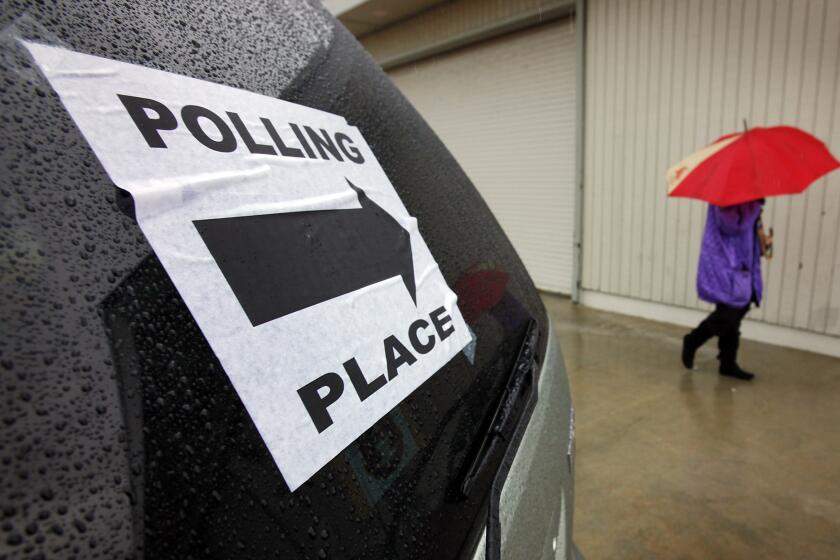Prisoners of the Census Bureau
TODAY, MORE THAN 2 million people, or nearly one out of every 100 adults, is sitting in a jail or prison in the United States -- an incarceration rate unprecedented in U.S. history.
The total number of prisoners is not in dispute. But how to tabulate them is emerging as perhaps the most vexing issue of the 2010 census.
The U.S. Census Bureau counts prisoners as residents of the towns and counties where they are incarcerated, even though most inmates have no ties to those communities and almost always return to their home neighborhoods upon release.
This has enormous and unsettling political and economic consequences, especially for California. The state banishes many of its urban offenders to prisons clustered in rural areas and intends to send at least 5,000 of its inmates out of state to cope with the prison overcrowding crisis.
In California and 47 other states, imprisoned felons are barred from voting. Yet these disenfranchised prisoners are included in the population tallies used to draw legislative and congressional districts.
This practice dilutes the votes of urban areas such as Los Angeles. Nearly one-third of the 172,000 inmates in California’s state prisons come from Los Angeles County, but only about 3% are incarcerated in the county.
The evidence of political inequities in redistricting because of how the Census Bureau counts prisoners is “compelling,” according to a recent National Research Council report.
A provocative analysis by the Prison Policy Initiative estimates that if prisoners held in upstate New York were counted in their home neighborhoods, at least four state Senate seats -- all Republican -- would be in jeopardy after redistricting. Last May, a federal appeals court suggested that counting the thousands of black and Latino prisoners from New York City as upstate residents may be a violation of the federal Voting Rights Act.
Nearly 200 counties nationwide, including seven in California, have at least 5% of their “residents” in prison. Lassen County, home to two large state prisons and one federal penitentiary, has a whopping 25% of its residents behind bars. Those prisoners also distort demographic data. Lassen County is 87% white, but only 82% if you count the 10,000 prisoners. Indeed, more than 90% of blacks in the county are incarcerated.
Such data make rural prison communities appear, on paper, more ethnically diverse and less affluent. Prisoners’ negligible pay artificially depresses the per-capita income of prison towns, which ironically then become more eligible for social programs for the poor.
Federal and state governments and nonprofit organizations use census data to allocate tens of billions of dollars for education, transportation, job training, public health and other social services. Cook County, Ill., is losing nearly $10 million a year in federal benefits because 26,000 Chicago-area residents are counted in prison communities elsewhere in the state.
Last year, in a report to Congress, the Census Bureau recoiled from counting prisoners in their home communities. The bureau cited prohibitive costs as well as security concerns, because inmates might have to be individually interviewed by census personnel. But these objections are unconvincing. In many ways, prisoners are cheaper, easier and safer to count than other populations, such as migrant workers or the homeless.
The 2010 census is rapidly approaching, and it may be too late to force a stubborn Census Bureau to change its ways for this go-round. But states can do some things on their own. California legislators could require the state to collect the home addresses of inmates and to adjust the census data before redistricting accordingly. Or the state could subtract its prisoners from the census data before redistricting.
At least a dozen counties in upstate New York already do this before drawing their county legislative districts. State legislators in California and elsewhere also should demand that the Census Bureau conduct a major test in the 2010 census of alternative ways to tally inmates -- as was recommended by the National Research Council.
States that send offenders to out-of-state prisons already have been pushing for a change in the rules, as have legislators from urban areas. As Michigan state Rep. LaMar Lemmons (D-Detroit), a proponent of census reform, said: “Prison is not a residence; it is a condition.”
More to Read
Sign up for Essential California
The most important California stories and recommendations in your inbox every morning.
You may occasionally receive promotional content from the Los Angeles Times.










